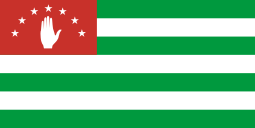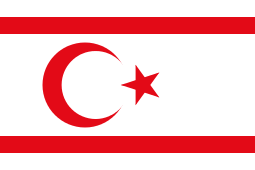Lists of Lepidoptera by region
The following are the regional Lepidoptera lists by continent. Lepidoptera is the insect order consisting of both the butterflies and moths.
Lepidoptera are among the most successful groups of insects. They are found on all continents, except Antarctica. Lepidoptera inhabit all terrestrial habitats ranging from desert to rainforest, from lowland grasslands to montane plateaus but almost always associated with higher plants, especially angiosperms (flowering plants).[1] Among the most northern dwelling species of butterflies and moths is the Arctic Apollo (Parnassius arcticus), which is found in the Arctic Circle in northeastern Yakutia, at an altitude of 1500 meters above sea level.[2] In the Himalayas, various Apollo species such as Parnassius epaphus, besides others, have been recorded to occur up to an altitude of 6,000 meters above sea level.[3]:221
Some lepidopteran species exhibit symbiotic, phoretic, or parasitic life-styles, inhabiting the bodies of organisms rather than the environment. Coprophagous pyralid moth species, called sloth moths, such as Bradipodicola hahneli and Cryptoses choloepi, are unusual in that they are exclusively found inhabiting the fur of sloths, mammals found in Central and South America.[4][5] Two species of Tinea moths have been recorded as feeding on horny tissue and have been bred from the horns of cattle. The larva of Zenodochium coccivorella is an internal parasite of the coccid Kermes species. Many species have been recorded as breeding in natural materials or refuse such as owl pellets, bat caves, honey-combs or diseased fruit.[5]
Of the approximately 174,250 lepidopteran species described until 2007, butterflies and skippers are estimated to comprise approximately 17,950, with moths making up the rest.[6][7] The vast majority of Lepidoptera are to be found in the tropics, but substantial diversity exists on most continents. North America has over 700 species of butterflies and over 11,000 species of moths,[8][9] while there are about 400 species of butterflies and 14,000 species of moths reported from Australia.[10] The diversity of Lepidoptera in each faunal region has been estimated by John Heppner in 1991 based partly on actual counts from the literature, partly on the card indices in the Natural History Museum (London) and the National Museum of Natural History (Washington), and partly on estimates:[11]:726
| Palearctic | Nearctic | Neotropic | Afrotropic | Indo-Australian (comprising Indomalayan and Australian regions) | |
|---|---|---|---|---|---|
| Estimated number of species | 22,465 | 11,532 | 44,791 | 20,491 | 47,286 |
Species by continent
Africa
Asia
Europe
- 1 2 3 4 5 6 7 The following countries and territories are also often considered as European:
-
 Armenia,
Armenia,  Azerbaijan,
Azerbaijan,  Cyprus,
Cyprus,  Georgia, and
Georgia, and  Turkey, classified as Asian countries by the United Nations Statistics Division, are also often considered as European countries, since their territories are either partly in Europe or in the vicinity of Europe (for the geographical boundaries between Asia and Europe, see here), and they have close political and historical ties with Europe (e.g., they are members of the Council of Europe).
Turkey, classified as Asian countries by the United Nations Statistics Division, are also often considered as European countries, since their territories are either partly in Europe or in the vicinity of Europe (for the geographical boundaries between Asia and Europe, see here), and they have close political and historical ties with Europe (e.g., they are members of the Council of Europe). -
 Abkhazia,
Abkhazia,  Nagorno-Karabakh,
Nagorno-Karabakh,  Northern Cyprus, and
Northern Cyprus, and  South Ossetia, all sovereign states lacking general international recognition, are also often considered as European countries.
South Ossetia, all sovereign states lacking general international recognition, are also often considered as European countries. -
 Akrotiri and Dhekelia is also often considered as a European territory.
Akrotiri and Dhekelia is also often considered as a European territory.
-
- ↑ Russia is generally considered as a European country more than an Asian country, even though most of its territory is in Asia, since most of its population and also its capital are in Europe, and it has close political and historical ties with Europe.
North America
South America
| Flag | Country or territory | Moths | Butterflies |
|---|---|---|---|
| |
Argentina | Moths | Butterflies |
| |
Bolivia | Moths | Butterflies |
| |
Brazil | Moths | Butterflies |
| |
Chile | Moths | Butterflies |
| |
Colombia | Moths | Butterflies |
| |
Ecuador | Moths | Butterflies |
| |
Falkland Islands (Overseas territory of the United Kingdom) | Moths | Butterflies |
| |
French Guiana (Overseas department of France) | Moths | Butterflies |
| |
Guyana | Moths | Butterflies |
| |
Paraguay | Moths | Butterflies |
| |
Peru | Moths | Butterflies |
| |
Suriname | Moths | Butterflies |
| |
Uruguay | Moths | Butterflies |
| |
Venezuela | Moths | Butterflies |
Oceania
Antarctica
No Lepidoptera species are known from the continent of Antarctica. However, there are records from nearby islands.
| Flag | Country or territory | Moths | Butterflies |
|---|---|---|---|
| |
French Southern and Antarctic Lands (Overseas territory of France) | Moths | Butterflies |
References
- ↑ Gullan, P. J.; P. S. Cranston (September 13, 2004). "7". The insects: an outline of entomology (3 ed.). Wiley-Blackwell. pp. 198–199. ISBN 1-4051-1113-5.
- ↑ Stumpe, Felix. "Parnassius arctica Eisner, 1968". Russian-Insects.com. Retrieved 9 November 2010.
- ↑ Mani, M. S. (1968). Ecology and Biogeography of High Altitude Insects. Volume 4 of Series entomologica. Springer. p. 530. ISBN 978-90-6193-114-0. Retrieved 9 November 2010.
- ↑ Sherman, Lee. jsessionid=B178230AA02D37492C9794327FB8DB71?sequence=1 ""An OSU scientist braves an uncharted rainforest in a search for rare and endangered species" in "Expedition to the Edge"" Check
|url=value (help) (PDF). Terra, Spring 2008. Oregon State University. Retrieved 14 February 2011. - 1 2 Rau, P (1941). "Observations on certain lepidopterous and hymenopterous parasites of Polistes wasps". Annals of the Entomological Society of America. 34: 355–366(12). Retrieved 14 February 2011.
- ↑ Mallet, Jim (12 June 2007). "Taxonomy of Lepidoptera: the scale of the problem". The Lepidoptera Taxome Project. University College, London. Retrieved 8 February 2011.
- ↑ Mallet, Jim (12 June 2007). "Taxonomy of butterflies: the scale of the problem". The Lepidoptera Taxome Project. University College, London. Retrieved 8 February 2011.
- ↑ Eaton, Eric R.; Kaufman, Kenn (2007). Kaufman field guide to insects of North America. Houghton Mifflin Harcourt. p. 391. ISBN 978-0-618-15310-7. Retrieved 12 February 2011.
- ↑ Tuskes, Paul M.; Tuttle, James P.; Collins, Michael M. (1996). The wild silk moths of North America: a natural history of the Saturniidae of the United States and Canada. The Cornell series in arthropod biology (illustrated ed.). Cornell University Press. p. 250. ISBN 978-0-8014-3130-2. Retrieved 12 February 2011.
- ↑ Green, Ken; Osborne, William S. (1994). Wildlife of the Australian snow-country: a comprehensive guide to alpine fauna (illustrated ed.). Reed. p. 200. ISBN 978-0-7301-0461-2.
- ↑ Kristensen, Niels P.; Scoble, M. J. & Karsholt, Ole (2007). "Lepidoptera phylogeny and systematics: the state of inventorying moth and butterfly diversity". In Z.-Q. Zhang & W. A. Shear. Linnaeus Tercentenary: Progress in Invertebrate Taxonomy (Zootaxa:1668) (PDF). Magnolia Press. pp. 699–747. ISBN 978-0-12-690647-9. Retrieved March 2, 2010.
See also
- For other Lepidoptera lists, see the categories:
- Lists of Lepidoptera by location
- Lists of Lepidoptera
- Lepidoptera by location
- Lepidoptera by continent
- Lepidoptera by country
- Lepidoptera by region


